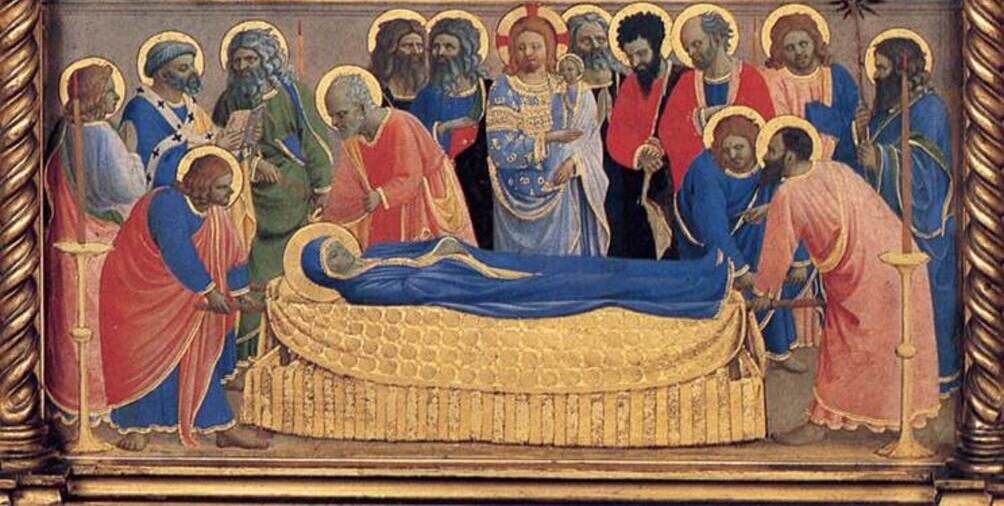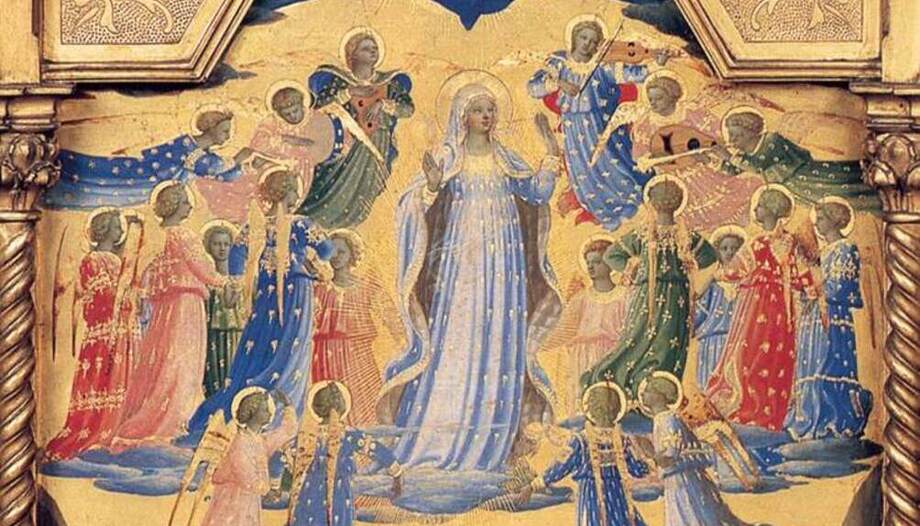Those of us who believe in Christ have the Virgin Mary as a model of life to follow, precisely because she had a privileged relationship with her son Jesus: He lovingly shared his glorious destiny with her. This is what gives her the merit to be Our Mother and to be present in the Catholic devotion with the feast of the Blessed Virgin Mary. Asunción or, in the Orthodox liturgy, with the Dormition. From time immemorial it has been celebrated by many peoples through popular religiosity with various artistic expressions, who have expressed their belief and affection for the Assumption (St. Bernard said: "I never feel so happy or fearful as when I have to speak of the glory of the Virgin Mary").
The Christian tradition that comes from the Apostles recalls that Mary was taken body and soul to Heaven at the end of her earthly life. This is because in everything she followed the way of her Son to the end: "Knowledge of the true Catholic doctrine on the Virgin Mary will always be the exact key to understanding the mystery of Christ," as Paul VI said (Nov. 21, 1964).
Dormition
She was glorified so that she would not suffer from the corruption of death. It is said that she fell asleep because theological speculation says that, if she did not sin because she was Immaculate, then she did not die either. But, in the same way, it is discussed theologically speaking that, if she was solidary in everything with Jesus Christ (who being in all innocence assumed the sins of humanity), she could have suffered and died like Him. But the truth is that there is no record of any illness, only the assumption of her possible old age under the care of the apostle John (see John 19:27).

Therefore, as her life was extraordinary, her death must also have been extraordinary, and from faith it is logical to think that she died incorrupt, as other saints also experienced. Hence the positive conclusions offered by the Puebla Document when it tells us that "Mary is a guarantee of feminine greatness; and that she shows the specific way of being a woman..." (#299). "Mary, the wise woman (see Luke 2:19-51), is the woman of salvation who placed all her femininity at the service of Christ and his saving work" (see Gal 4:4- 6; LG 56).
Church tradition
By faith we believe that the Virgin was assumed into heaven, and since the origins of Christianity there have been both the sensus fidei (LG 12) as the consensus fidelium in agreement on this. In fact, it was the believing people who, through letters to the Holy See, asked for the Assumption of Mary to be declared a dogma of faith; and Pope Pius XII in 1950, gathering the faith of the whole tradition of the Church, published the Apostolic Constitution Munificentissimus Deus.
And so he proclaimed it a dogma of faith with these words: "After raising to God many and repeated prayers and invoking the light of the Spirit of Truth, for the glory of Almighty God, who bestowed on the Virgin Mary his peculiar benevolence; for the honor of his Son, immortal King of the ages and conqueror of sin and death; To increase the glory of the same august Mother and for the joy and gladness of the whole Church, by the authority of our Lord Jesus Christ, of the blessed Apostles Peter and Paul and by our own authority, we pronounce, declare and define it to be a divinely revealed dogma that the Immaculate Mother of God, ever Virgin Mary, at the end of her earthly life, was assumed body and soul into heavenly glory".
This feast should not be confused with the Ascension of the Lord, which refers to Jesus Christ, who, being God, rose to heaven without needing any help, forty days after his resurrection. Christ left when everything was accomplished and by his own merits; on the other hand, Our Lady was fetched by the angels, because no human could do something so supernatural: all miracles are works of God.
The "Transit of Mary".
Although Sacred Scripture does not give us direct information in this regard, in the East they speak of the "Transitus of Mary", which is also a form of invocation of the Virgin, and this liturgical feast has always been celebrated. In the same way, we find the Psalm that says: "Thou shalt not let thy faithful one experience corruption"(15:10-11), referred to the event of the resurrection and subsequent ascension, because Jesus did not remain in the tomb, but it can also be applied to his mother Mary, because she is always faithful to God.
The Assumption shows us the way
The Catechism of the Catholic Church teaches us that: "The Immaculate Virgin, preserved immune from every stain of original sin, at the end of her life on earth, was assumed body and soul into the glory of heaven and exalted by God as Queen of the universe, in order to be conformed more fully to her Son, Lord of lords and conqueror of sin and death. The Assumption of the Blessed Virgin constitutes a singular participation in the Resurrection of her Son and an anticipation of the resurrection of other Christians" (CEC # 966).
This is the good news for all of us: more than looking at her from the altars, elevated as a privileged or distant creature, we should rejoice that her assumption points out to us and opens the way; and that it is also a promise that we will all be with her in our bodies transformed into glorious ones: when we cease to be pilgrims and reach Heaven.
Adjunct Professor Faculty of Theology PUC
Master in Fundamental Theology PUC
Spokeswoman for Catholic Voices









